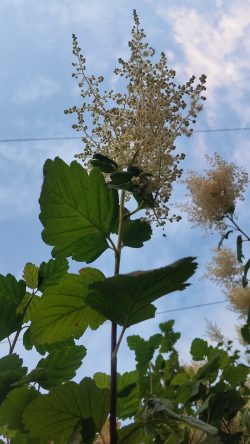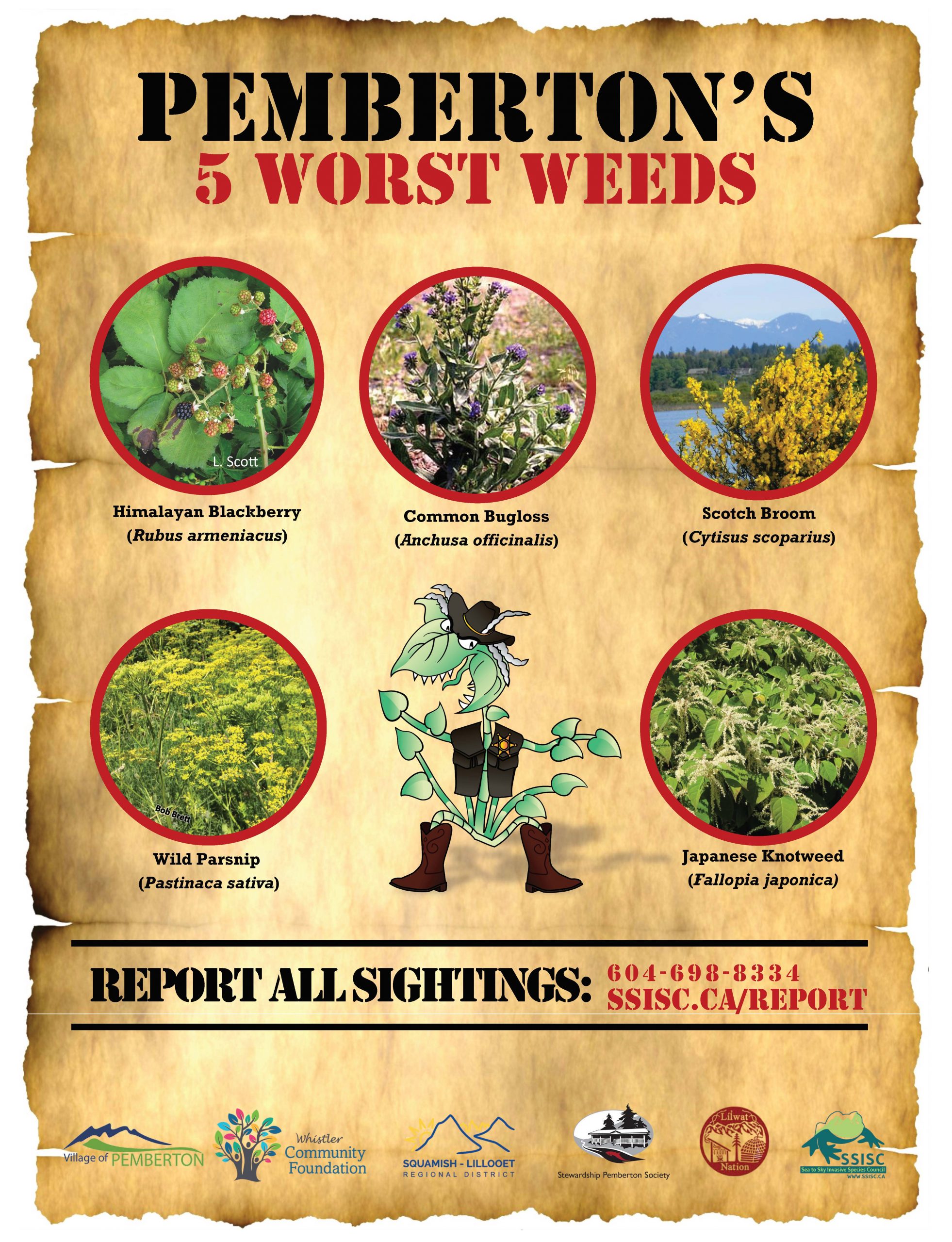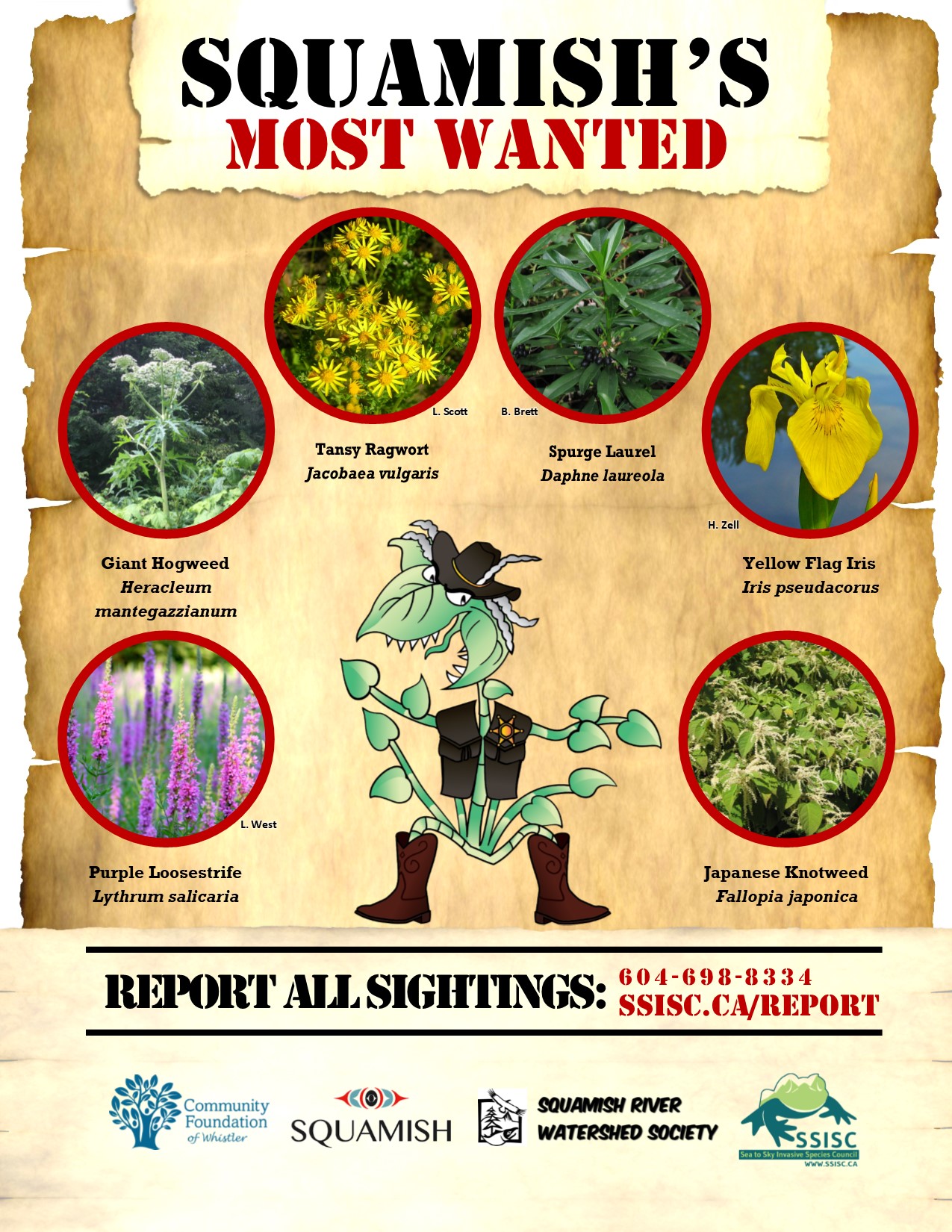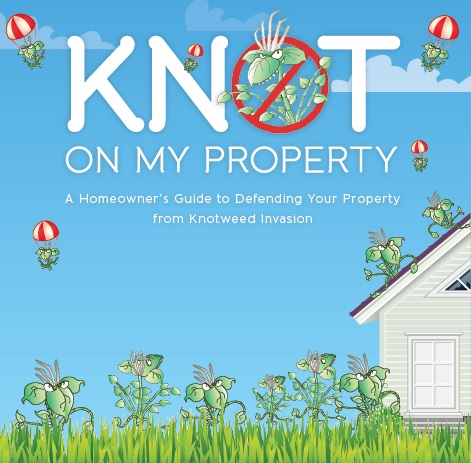Japanese, Giant, Bohemian and Himalayan Knotweed
Fallopia japonica, Fallopia sachalinensis, F. x bohemicum, Persicaria wallichii

All four knotweed species have similar ID characteristics and growth habits; each species is presented in detail below.
It is worth noting is that Bohemian knotweed (Fallopia x bohemicum) is the result of natural hybridization between Japanese and giant knotweeds (F. japonica and F. sachalinensis), whereas Himalayan knotweed is a different genus altogether (Persicaria wallichii).

Alternate Names
Knotweed taxonomy has undergone changes over the years. Knotweed species are also known as:
- Reynoutria
- Pleuropterus
- Polygonum
- Tiniaria
Knotweed species are also known as:
- Cultivated knotweed
- Garden smartweed
- Kashmir plume
- Elephant ear bamboo
- Mexican bamboo
- Japanese bamboo
- American bamboo
- Fleeceflower
- Himalayan fleece vine
- Monkeyweed
- Tiger stick
- Hancock’s curse
- Donkey rhubarb
- Sally rhubarb
ID Characteristics
General: Japanese, Bohemian, giant and Himalayan knotweeds are very similar in their growth characteristics and overall stem appearance. All four are perennial species, with the above-ground vegetation dying off in winter, while the below-ground vegetation lies dormant. The species can be distinguished by their leaf shape and size.
Stems: All four knotweed species have hollow, upright green stems with reddish-brown speckles, which resemble bamboo.
Flowers: All four knotweed species have showy, plume-like, branched flower clusters but the flower colour varies slightly. They bloom in late summer.
Leaves:
- Japanese knotweed has egg-shaped leaves 3-10 cm wide and 10 – 15 cm long, and the veins on the underside of the leaves have blunt knobs.
- Bohemian knotweed leaves are egg-shaped, 5-30cm long, and the undersides have short, stiff hairs.
- Giant knotweed leaves are heart-shaped but 20-40cm long, and the undersides have long hairs.
- Himalayan knotweed leaves look most different from the other species, with lance-shaped leaves up to 20cm long. The underside of the leaves is coated with stiff hairs.
Similar Species
Native:
Red osier dogwood (Cornus stolonifera): leaves are oval with prominent parallel veins converging at the leaf tips. Flowers are arranged in a flat-topped terminal cluster (2-4 cm wide).

Photo credit: Lydia Dani (E-Flora)
Ocean spray (Holodiscus discolor): leaves are egg-shaped to broadly triangular and coarsely toothed or shallowly pinnately lobed. Stems are slender and hairy.

Invasive:
Bamboo (Bambusoideae spp.): has harder stems that cannot be snapped easily like knotweed, and its leaves are very slender and long (up to 50cm long)

Common bamboo (Whitney Cranshaw, Colorado State University, Bugwood.org)
Habitat and Origin
Knotweeds originate from Asia, including Japan, Korea, China and Pakistan. They were introduced to B.C. in the early 1900’s as garden ornamentals.
In their native range, knotweeds live on harsh volcanic slopes, where they play an important role as a colonizing species. In coastal B.C., knotweeds thrive due to a lack of predators and diseases, coupled with their incredible reproductive capabilities. From moist soil to river cobble, and from full to partial sunlight, they can dominate rivers, creeks, roadside ditches, and beaches. They can tolerate a range of conditions and pH ranges, including areas with heavy metal and salt pollution. Knotweeds’ preference for moist, freshly-disturbed soil also makes areas prone to seasonal high water or flooding particularly susceptible.
How it Spreads
Knotweeds species spread through root systems that extend up to 20 m laterally and up to 3 m deep. They mainly reproduce vegetatively, meaning that new plants sprout from small pieces of stem or root tissue (as little as 0.7 grams). Japanese knotweed rarely spreads by seed in North America, but it can cross-pollinate with giant knotweed to produce the hybrid Bohemian knotweed.
Knotweeds species can spread when fragments of the roots and stems are moved in water or through human activities. These activities include moving soil containing knotweed plant material, mowing or cutting knotweed, or dumping yard waste that contains knotweed. In river corridors, the plant can spread from fragments that travel downstream during high-water events. Disturbing the knotweed shoots (by pulling out or mowing, for instance) may also encourage growth, resulting in an even larger infestation.
Impacts
Ecological impacts:
Knotweeds threaten biodiversity and disrupt food chains by reducing available habitat, increasing soil erosion potential, and shading out other plant species.
Habitat Reduction
- Although minor insect grazing has been observed on invasive knotweed plants, no wildlife species are known to significantly feed on them so their presence devastates habitat for our native wildlife.
- Dense monocultures of knotweeds displace native plant communities, including those containing rare and endangered species. This disrupts food chains and threatens biodiversity.
- Knotweed species appear to exude allelopathic substances (biochemicals) that negatively impact the growth and development of surrounding native vegetation.
Erosion
- Knotweed-infested soils are prone to erosion, as the roots lack the well-developed hairs required to stabilize stream bank soil. This destabilization, combined with the die-back of above-ground growth, further exposes soil to the elements during winter months. This exposed ground is more susceptible to erosion during peak low events, such as winter rains, and increases the risk of sedimentation in waterways, potentially impacting fish populations and water quality.
- Knotweed may cause flooding by clogging river and stream channels with its large stalks, thus changing natural erosion and deposition patterns.
Shading
- Knotweed species displace the lower, slower-growing native plants beneath their extensive canopy through shading, competition for moisture and nutrients, and the production of densely matted plant litter.
- By limiting the amount of sunlight available below the water, knotweed infestations impact freshwater food chains. Many invertebrates, especially aquatic insects that prefer woody plant leaves (as opposed to knotweeds leaves), tend to move elsewhere.
Economic impacts:
Knotweeds roots are extremely persistent. They can grow through concrete and asphalt, severely damaging infrastructure. Large monocultures of knotweeds can also widen irrigation ditches, once again potentially damaging surrounding infrastructure. This results in significant control, management, and repair costs.
- In the United Kingdom, knotweeds reduce property values and, in some cases, people have been unable to secure a mortgage or insure their property due to infestations. Without concerted action, it is conceivably only a matter of time before this is the case within the Sea to Sky corridor.
- It can grow through small cracks in pavement, concrete, or drainage structures, reducing the structural integrity of public infrastructure – a huge potential burden to taxpayers. Knotweed plants can also reduce the integrity of rail beds and compromise train safety.
- Knotweed is a safety concern along roadways as it reduces sight lines at intersections and along roadsides due to its rapid growth.
- Hydrological changes caused by knotweed can bring on excessive widening of stream channels, undercutting existing adjacent roads and highways.
- Knotweeds can restrict access to waterbodies, impacting aquatic recreationalists like anglers or boaters.
Stop the Spread
Learn to identify knotweeds: use the images presented in this profile page and peruse the documents linked below for more information.
What to do if you spot it: You can report any knotweeds sighting by visiting our reporting page.
What KNOT to do: The best approach to controlling the spread of knotweeds is PREVENTION.
Do not:
- Plant knotweeds in a garden, no matter how well-contained its enclosure may seem.
- Move soil that has been contaminated with knotweeds.
- Mow or weed-whack knotweeds plants, as the fragments can propagate as new colonies. Frequent mowing may also accelerate shoot development, leading plants to spread laterally from the parent plant.
Control
Knotweeds are difficult to control and require a dedicated, multi-year approach.
Chemical control:
- A site-specific, multi-year treatment plan, using herbicide, is the most effective control method for knotweed infestations. Targeted application methods, such as foliar spray or stem injection, attack both above-ground vegetation and root systems.
- We recommend that any herbicide application is carried out by a person holding a valid BC Pesticide Applicator Certificate and experience treating knotweed. Before selecting and applying herbicides, you must review and follow herbicide labels and application rates; municipal, regional, provincial and federal laws and regulations; species-specific treatment recommendations, and site-specific goals and objectives.
Mechanical control:
- It is NOT recommended to use mechanical treatments on knotweeds, due to limited efficacy of such treatments.
Biological Control:
- There are no biocontrol agents currently available in Canada for knotweed control, however a sap sucker psyllid (Aphalara itadori) is currently being assessed by Agriculture and Agri-Food Canada.
Refer to the Metro Vancouver Best Management Practices document to learn more about how to control knotweeds, or contact SSISC to discuss site specific requirements.
Sea to Sky Distribution
Knotweeds Factsheet
Having trouble viewing the factsheet? Don’t worry, all the information is included on this page. You can also contact us with any questions.
Japanese Knotweed
Bohemian Knotweed
Himalayan Knotweed
Giant Knotweed
Additional Resources
Knotweed: How to Knock And Spray
How to Identify Knotweed
References
- Capital Region Invasive Species Program, Knotweed Invasive Species Alert Sheet
- Centre for Agricuture and Bioscience International (CABI), Fallopia japonia
- Centre for Agricuture and Bioscience International (CABI), Fallopia x bohemica
- Center for Invasive Species and Ecosystem Health, Controlling Knotweed in the Pacific Northwest
- Electronic Atlas of the Flora of BC, Persicaria wallichii
- Electronic Atlas of the Flora of BC, Reynoutria japonica
- Electronic Atlas of the Flora of BC, Reynoutria sachalinensis
- Fraser Valley Invasive Species Society, Knotweed Species
- Government of BC, Key to Identification of Invasive Knotweeds in British Columbia
- Invasive Species Centre, Bohemian knotweed
- Invasive Species Compendium, Fallopia sachalinensis (Giant Knotweed)
- Invasive Species Council of BC, Bohemian Knotweed
- Invasive Species Council of BC, Giant Knotweed
- Invasive Species Council of BC, Himalayan Knotweed
- Invasive Species Council of BC, Japanese Knotweed
- Invasive Species Council of BC, Knotweeds TIPS Factsheet
- King County Noxious Weed Control Board, Invasive Knotweed Identification and Control
- Knot on My Property
- Metro Vancouver and Invasive Species Council of Metro Vancouver, Best Management Practices for Knotweed Species in the Metro Vancouver Region


















































